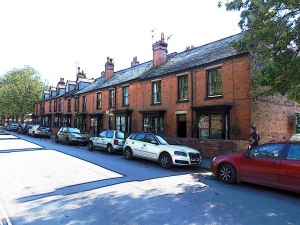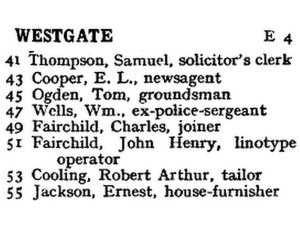Over the years several streets in Lincoln have had name changes, Clay Lane to West Parade; New Road to Lindum Road; St Giles Gate to Wragby Road are just three. What seems at first like the most insignificant name change was that of Pond Street.
Pond Street, parallel to West Parade and Newland Street West, joining both roads via Rudgard Lane, was built between the early 1870s and the late 1880s. The fronts of the numbers 21 to 31 are built of brick but the back walls are of stone. Windows in the stone wall have been replaced, but there are still some "original" windows of pointed arch design in the stonework. It may be that the builder re-used stone from a demolished building.
Why was the name of the street changed? I have been unable to find a definite reason for the change of name, but it may be due to World War I.
Two soldiers living on Pond Street were killed during the war:
- George Christian, died 28th April 1917 age 19 , 8th Battalion
- Walter Henry Christian, 12th October 1918, age 22, 5th Battalion
George and Walter were sons of Charles (died 1912, age 44) and Hephzibah Christian, of 32, Pond St. Leaving Hephzibah with one son, Leslie. I believe the street name was changed to commemorate the sacrifice they made for King and Country.
The street was renamed St Faith Street about 1929, St Faith's Church stands behind the recently built houses at the end of the street (that may also the reason for the renaming). There were 4 houses between number 11 and 13 which retained the name Pond Cottages, these have been demolished, together with numbers 7-17 (odd numbers only), and the area is now a green space.













